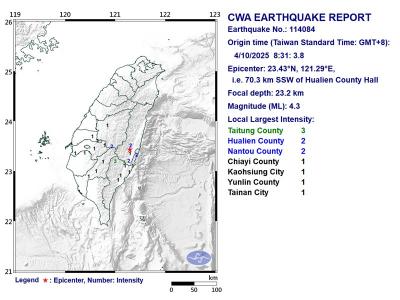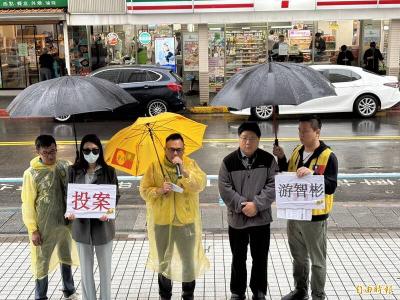The high cost of a submarine-rescue service agreement with the US has led some to wonder whether the navy is considering other options to secure the safety of the crews of the nation's four subs, but according to unnamed sources, there is no plan to do so, even though it could take more than a day for the Americans to come to the rescue.
The agreement was the work of ex-navy commander-in-chief retired Admiral Nelson Ku (顧崇廉), who is now a PFP lawmaker. Ku was the navy's chief from 1994 to 1997.
The agreement was one of Ku's greatest contributions to the navy, because a distressed submarine would have had to rely on its own devices before it was signed.
Submarine crews doubtless have peace of mind under the rescue agreement, but it has come to light that the navy is paying a large sum of money for a program which has never been used. No information is available about the cost of the program because those party to the agreement are sworn to secrecy.
The navy currently has four submarines, including two older vessels acquired from the US and two modern ones bought from the Netherlands.
Before the navy signed the submarine-rescue agreement with the US during Ku's term as the navy chief, the the crew of four submarines could only hope for a miracle if they had an accident that incapacitated the vessel.
An official with the navy, who spoke on condition of anonymity, said the navy's submarine rescue agreement with the US is confidential and that it is not proper for the navy to openly discuss it.
According to Chinese-language news reports on the subject, the navy's agreement with the US states that the US is required to send a deep submergence rescue vehicle (DSRV) to Taiwan in the shortest time possible if any of Taiwan's four submarines become disabled.
If needed, a DSRV would be delivered to Taiwan via a transport airplane and then shipped to the accident site via a ship.
Two years ago, one of the two Holland-made submarines struck an underwater object, sustaining considerable damage to its bow. It is probably the only occasion that the navy came close to having a need for the DSRV service.
Taiwan's military periodically comes under pressure from industries and legislators to help stimulate the local economy by refusing to buy from foreign sources and sign contracts with local companies, but in the case of submarine rescue, it appears as though there are few alternatives. Asked about whether it is necessary for Taiwan to develop its own submarine-rescue capabilities, the navy said it has no such plan at the moment because the cost would be too high.
In 10 years, the navy might buy another eight diesel-electric submarines from the US. After these eight submarines go into service, the navy would be faced with an increased possibility of experiencing a submarine disaster.
Even under this scenario, the navy responded by saying that the cost likely would be prohibitive.
A naval official said that although foreign aid might not be able to come on time, a disabled submarine has enough oxygen for its crew for two days.
"In two days, the DSRV could arrive here," a naval official said.

Taiwan is stepping up plans to create self-sufficient supply chains for combat drones and increase foreign orders from the US to counter China’s numerical superiority, a defense official said on Saturday. Commenting on condition of anonymity, the official said the nation’s armed forces are in agreement with US Admiral Samuel Paparo’s assessment that Taiwan’s military must be prepared to turn the nation’s waters into a “hellscape” for the Chinese People’s Liberation Army (PLA). Paparo, the commander of the US Indo-Pacific Command, reiterated the concept during a Congressional hearing in Washington on Wednesday. He first coined the term in a security conference last

A magnitude 4.3 earthquake struck eastern Taiwan's Hualien County at 8:31am today, according to the Central Weather Administration (CWA). The epicenter of the temblor was located in Hualien County, about 70.3 kilometers south southwest of Hualien County Hall, at a depth of 23.2km, according to the administration. There were no immediate reports of damage resulting from the quake. The earthquake's intensity, which gauges the actual effect of a temblor, was highest in Taitung County, where it measured 3 on Taiwan's 7-tier intensity scale. The quake also measured an intensity of 2 in Hualien and Nantou counties, the CWA said.

The Overseas Community Affairs Council (OCAC) yesterday announced a fundraising campaign to support survivors of the magnitude 7.7 earthquake that struck Myanmar on March 28, with two prayer events scheduled in Taipei and Taichung later this week. “While initial rescue operations have concluded [in Myanmar], many survivors are now facing increasingly difficult living conditions,” OCAC Minister Hsu Chia-ching (徐佳青) told a news conference in Taipei. The fundraising campaign, which runs through May 31, is focused on supporting the reconstruction of damaged overseas compatriot schools, assisting students from Myanmar in Taiwan, and providing essential items, such as drinking water, food and medical supplies,

New Party Deputy Secretary-General You Chih-pin (游智彬) this morning went to the National Immigration Agency (NIA) to “turn himself in” after being notified that he had failed to provide proof of having renounced his Chinese household registration. He was one of more than 10,000 naturalized Taiwanese citizens from China who were informed by the NIA that their Taiwanese citizenship might be revoked if they fail to provide the proof in three months, people familiar with the matter said. You said he has proof that he had renounced his Chinese household registration and demanded the NIA provide proof that he still had Chinese